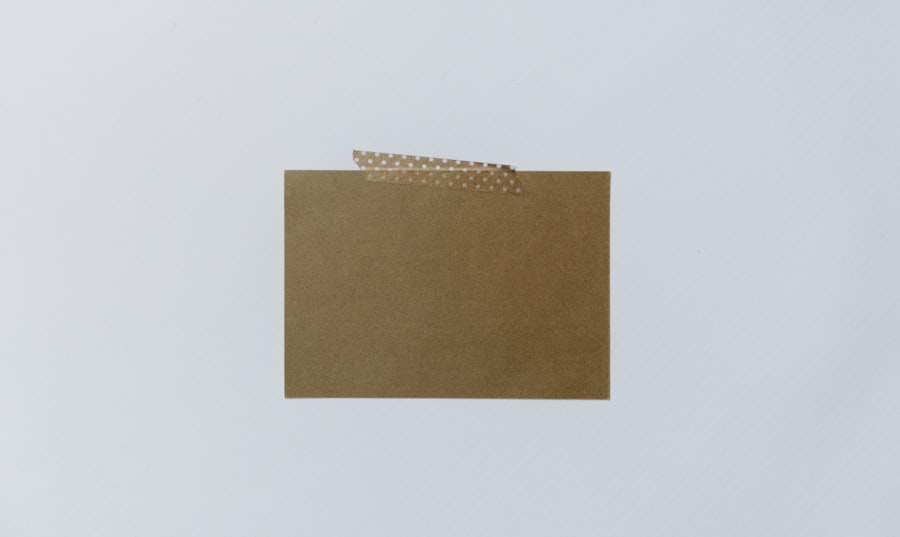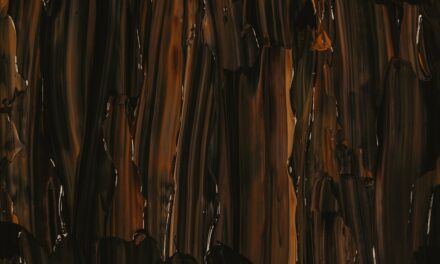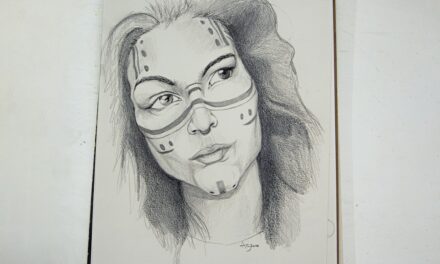Embossing, a technique that involves creating raised designs on a surface, has a rich and varied history that dates back to ancient civilisations. The earliest known examples of embossing can be traced to the Egyptians, who used metal tools to create intricate designs on gold and silver. This method was not merely decorative; it also served practical purposes, such as marking ownership or signifying status.
As time progressed, embossing techniques evolved and spread across different cultures. In medieval Europe, for instance, artisans began to emboss leather and paper, often using heated tools to create detailed patterns. This period saw the rise of bookbinding techniques that incorporated embossing, allowing for the creation of ornate covers that showcased the craftsmanship of the binder.
The Industrial Revolution marked a significant turning point in the history of embossing. With advancements in technology, mass production became possible, and embossing techniques were adapted for use in various industries. The introduction of steam-powered presses allowed for more intricate designs to be produced at a faster rate, making embossed products more accessible to the general public.
By the late 19th century, embossing had found its way into advertising and packaging, with companies using raised designs to attract consumers’ attention. Today, embossing remains a popular technique in various fields, from fine art to commercial printing, demonstrating its enduring appeal and versatility.
Summary
- Embossing has a rich history dating back to ancient civilizations, where it was used to add decorative elements to metalwork and paper.
- The tools and materials for embossing include embossing powders, heat guns, embossing folders, and embossing stylus.
- Techniques for creating embossed artwork include heat embossing, dry embossing, and relief embossing.
- Different types of embossing include blind embossing, debossing, and combination embossing.
- Embossing is used in various art forms such as card making, scrapbooking, and mixed media art.
Tools and Materials for Embossing
The Essential Tools
The most fundamental tool is the embossing folder or plate, which is typically made from plastic or metal and features a raised design. These folders are used in conjunction with a die-cutting machine or an embossing machine, which applies pressure to create the embossed effect on paper or other materials.
Enhancing the Design
Additionally, a variety of styluses and bone folders can be employed to enhance the detailing of the embossed design. These tools allow artists to manipulate the surface further, adding depth and texture to their work.
Materials and Creative Possibilities
In terms of materials, paper is the most commonly used substrate for embossing, but it is by no means the only option. Cardstock, leather, and even fabric can be embossed to create unique textures and patterns. The choice of material often depends on the desired outcome; for instance, thicker papers or cardstocks are ideal for creating bold designs that stand out. Furthermore, artists may choose to incorporate inks or foils into their projects to add colour and shine to the embossed areas. The combination of different materials and tools opens up a world of creative possibilities, allowing artists to experiment with various effects and finishes.
Techniques for Creating Embossed Artwork

Creating embossed artwork involves several techniques that can yield different results depending on the desired effect. One popular method is dry embossing, which involves using a stylus to trace over a design on the reverse side of the paper. This technique creates a raised effect on the front side without the use of heat or pressure from a machine.
Dry embossing is particularly favoured for its simplicity and the level of control it offers artists over their designs. It allows for intricate detailing and can be combined with other techniques such as inking or painting to enhance the final piece. Another widely used technique is heat embossing, which requires special embossing powders that melt when heated.
In this method, an ink pad is used to stamp a design onto the paper, followed by sprinkling embossing powder over the wet ink. Once excess powder is removed, a heat gun is applied to melt the powder, resulting in a glossy, raised finish. This technique is especially popular in card-making and scrapbooking due to its vibrant results and tactile quality.
Both dry and heat embossing techniques can be used in tandem or separately, allowing artists to explore various styles and effects in their embossed artwork.
Different Types of Embossing
Embossing can be categorised into several distinct types, each with its unique characteristics and applications. One common type is blind embossing, where a design is raised without any ink or foil applied. This technique relies solely on texture and is often used for elegant stationery or business cards where subtlety is key.
Blind embossing creates a sophisticated look that can convey professionalism and quality without overwhelming visual elements. Another notable type is foil embossing, which combines both embossing and foil stamping techniques. In this process, a metallic foil is applied to the raised areas of an embossed design, resulting in a striking contrast between the shiny foil and the textured background.
Foil embossing is frequently used in high-end packaging and promotional materials due to its eye-catching appeal. Additionally, there is also debossing, which creates an indented design rather than a raised one. This technique can be used alongside embossing to create layered effects that add depth and interest to a piece.
Embossing in Different Art Forms
Embossing transcends traditional paper crafts and has found its way into various art forms, showcasing its versatility as a medium. In fine art, artists often incorporate embossing into mixed media works, using it as a way to add texture and dimension to their pieces. For example, an artist might combine embossed elements with painting or collage techniques to create visually striking compositions that engage viewers on multiple sensory levels.
The tactile nature of embossed surfaces invites interaction and exploration, making it an effective tool for contemporary artists seeking to challenge conventional boundaries. In addition to fine art, embossing plays a significant role in graphic design and branding. Designers frequently utilise embossed elements in logos, packaging, and promotional materials to create memorable visual identities that stand out in a crowded marketplace.
The tactile quality of embossed designs can evoke feelings of luxury and sophistication, making them particularly appealing for high-end products. Furthermore, embossing can be employed in textile design, where patterns are pressed into fabrics to create unique textures that enhance garments or home décor items.
Tips for Successful Embossing

Material Selection and Preparation
When selecting materials, it is crucial to consider the thickness and quality of the paper or cardstock. Thicker papers tend to hold up better under pressure and produce more pronounced embossed effects. It is also essential to ensure that your materials are clean and dry before commencing the embossing process.
Tool Maintenance and Pressure Application
Additionally, it is crucial to ensure that your tools are clean and well-maintained; any debris or residue on your embossing plates can lead to uneven results or unwanted marks on your work. Another important consideration is the pressure applied during the embossing process. Too much pressure can cause tearing or damage to the material, while too little may result in a lacklustre design that fails to stand out.
Testing and Experimentation
It is advisable to conduct test runs on scrap materials before committing to your final piece; this practice allows you to fine-tune your technique and make necessary adjustments without risking your primary project. Lastly, don’t hesitate to experiment with different combinations of techniques and materials; creativity often flourishes when boundaries are pushed.
Common Mistakes to Avoid When Embossing
While embossing can be an enjoyable and rewarding process, there are several common pitfalls that artists should be aware of to avoid frustration and disappointment. One frequent mistake is neglecting to properly align the embossing folder or plate with the material being used. Misalignment can lead to uneven designs or incomplete impressions that detract from the overall aesthetic of the piece.
Taking time to carefully position your materials before applying pressure will help ensure consistent results. Another common error involves rushing through the process without allowing adequate time for preparation or drying between steps. For instance, if using heat embossing techniques, it is essential to allow the ink to dry slightly before applying powder; otherwise, you may end up with smudged designs or uneven coverage.
Additionally, failing to clean your tools regularly can lead to build-up that affects performance over time. By being mindful of these potential mistakes and taking proactive measures to avoid them, artists can enhance their embossing experience and achieve more satisfying results.
Exploring Creative Possibilities with Embossing
The world of embossing offers endless creative possibilities for artists willing to experiment with this versatile technique. One exciting avenue is combining embossing with other artistic methods such as painting or stamping. For instance, an artist might create an embossed background before applying watercolours or acrylics over it; this approach allows for unique textures that interact beautifully with colour applications.
Similarly, incorporating stamped images alongside embossed designs can create dynamic compositions that draw viewers’ attention. Moreover, artists can explore unconventional materials beyond traditional paper or cardstock by experimenting with metal sheets or even wood surfaces for embossing projects. Each material brings its unique characteristics that influence how designs are perceived; for example, metal can produce striking reflections when embossed while wood offers a rustic charm that enhances organic designs.
By pushing boundaries and embracing new ideas within their work, artists can unlock fresh perspectives on what embossing can achieve in their creative endeavours.
If you’re intrigued by the unique textures and techniques used in embossing, you might also find it fascinating to explore the innovative styles of prominent artists. For instance, Jackson Pollock’s radical approach to abstract expressionism revolutionised the art world. His dynamic technique of dripping and splattering paint created complex, energetic compositions that broke away from traditional forms of painting. To delve deeper into his life and groundbreaking work, consider reading An Introduction to the Artist Jackson Pollock, which offers a comprehensive look at his artistic journey and the profound impact he had on modern art.




